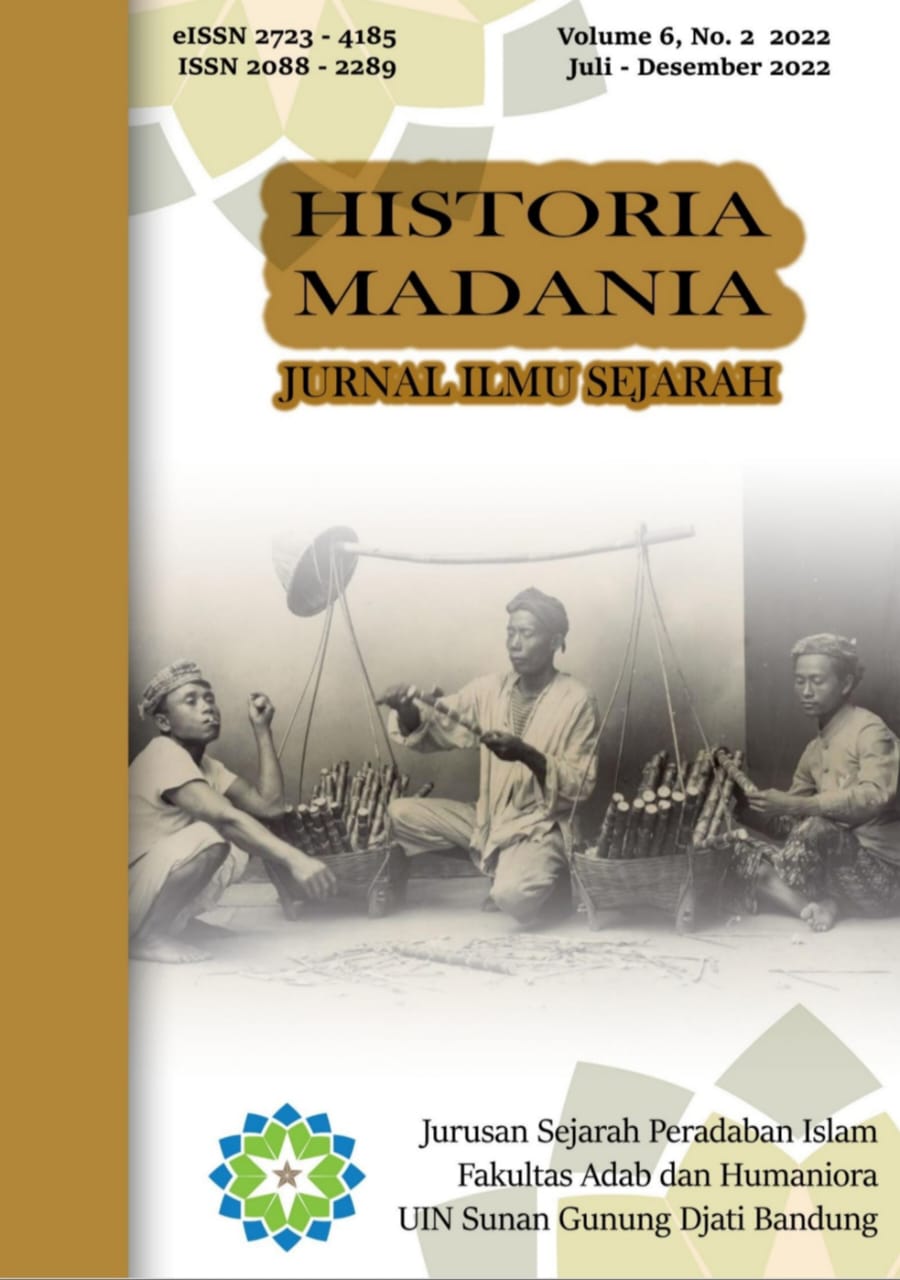Sejarah Jembatan Ampera sebagai Ikon Kota Palembang
DOI:
https://doi.org/10.15575/hm.v6i2.18548Abstract
This study aims to describe the history of the Ampera Bridge as one of the icons of the city of Palembang. Ampera Bridge is a transportation infrastructure that connects the two areas of this city, namely Seberang Ilir and Seberang Ulu. Ampera Bridge also shows the effort to equalize the economy between the two sides of the city of Palembang. The method used in writing this article is the historical method. The historical method is a method that is carried out by collecting data and interpreting the symptoms of events that have occurred in the past, the interpretation critically describes all the facts or the truth of the events that occurred. The steps in the historical method include heuristics, source criticism, interpretation, and historiography. Approximately 100 tributaries pass the city of Palembang throughout the city. The number of tributaries originates from the largest river that separates the city of Palembang and is divided into two parts, namely the area known as the Ilir area and the Ulu area. In April 1962, construction of the bridge over the Musi River began, and the construction of this bridge used the Reimbursement Fund from the Japanese War. The Musi Bridge is called the Bung Karno Bridge to show the gratitude of the people of Palembang to President Soekarno for the construction of a bridge over the Musi River which is much needed and awaited by the people of Palembang. Bung Karno Bridge changed its name to Ampera Bridge during the Orde Baru era. Since its inauguration, the Ampera Bridge has become one of the symbols that form the identity or characteristic of the city of Palembang.
Downloads
Published
How to Cite
Issue
Section
Citation Check
License
Authors who publish with this journal agree to the following terms:
- Authors retain copyright and grant the journal right of first publication with the work simultaneously licensed under a Creative Commons Attribution License that allows others to share the work with an acknowledgment of the work's authorship and initial publication in this journal.
- Authors are able to enter into separate, additional contractual arrangements for the non-exclusive distribution of the journal's published version of the work (e.g., post it to an institutional repository or publish it in a book), with an acknowledgment of its initial publication in this journal.
- Authors are permitted and encouraged to post their work online (e.g., in institutional repositories or on their website) prior to and during the submission process, as it can lead to productive exchanges, as well as earlier and greater citation of published work (See The Effect of Open Access).


